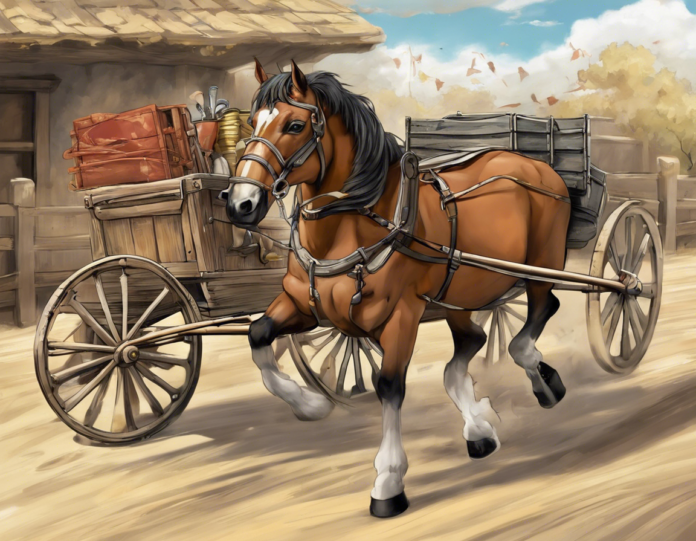When it comes to understanding how a horse can pull a cart despite the principle of action equals reaction, there are several important factors to consider. While it may seem counterintuitive at first, the physics behind this common scenario are quite fascinating. In this article, we will delve into the science behind horse-drawn carts and explore the key concepts that allow them to function effectively.
Newton’s Third Law of Motion: Action and Reaction
To begin our exploration, let’s first revisit Newton’s third law of motion, which states that “for every action, there is an equal and opposite reaction.” This fundamental principle of physics is often used to explain the movement of objects in the physical world. When a force is applied to an object, the object exerts an equal force in the opposite direction.
Equilibrium and Forces in Horse-Drawn Carts
In the case of a horse pulling a cart, there are multiple forces at play that allow the system to function. When the horse exerts a forward force on the cart, the cart exerts an equal and opposite force on the horse, as dictated by Newton’s third law. This reactive force from the cart creates a tension in the harness that is connected to the horse.
Role of Friction in Horse-Drawn Carts
One of the key factors that enable a horse to pull a cart is the presence of friction between the horse’s hooves and the ground. As the horse pushes forward, the friction between its hooves and the ground allows it to gain traction and move the cart along with it. Without sufficient friction, the horse would simply slip and not be able to move the cart effectively.
Understanding Mechanical Advantage
Another important concept to consider in the context of horse-drawn carts is mechanical advantage. By using a system of pulleys and harnesses, the design of the cart can be optimized to provide the horse with a mechanical advantage, making it easier for the horse to move the load. This principle allows for the efficient transfer of force from the horse to the cart.
Distribution of Weight in the Cart
The distribution of weight within the cart also plays a crucial role in its functionality. By distributing the load evenly and ensuring that the center of mass is balanced, the cart becomes easier to pull for the horse. Uneven weight distribution can create imbalances and make it more difficult for the horse to move the cart smoothly.
Importance of Training and Conditioning for Horses
In addition to the mechanical aspects of horse-drawn carts, the training and conditioning of the horse are equally important. Horses that are well-trained and physically fit are better equipped to pull heavy loads with greater ease. Proper training helps the horse understand its role and develop the necessary strength and endurance for pulling carts effectively.
Frequently Asked Questions (FAQs)
- Can any horse pull a cart, or are certain breeds more suitable for this task?
-
While any horse can potentially pull a cart, certain breeds, such as draft horses, are specifically bred for their strength and ability to pull heavy loads.
-
Do horse-drawn carts have brakes, and how are they controlled?
-
Yes, horse-drawn carts can have brakes that are typically controlled by the driver using reins or other mechanisms to slow down or stop the cart.
-
What is the role of the driver or handler in a horse-drawn cart system?
-
The driver or handler plays a crucial role in guiding the horse, controlling the speed and direction of the cart, and ensuring the safety of the passengers or cargo.
-
How do horse-drawn carts compare to other forms of transportation in terms of efficiency and sustainability?
-
Horse-drawn carts are considered a more traditional and eco-friendly form of transportation, relying on the natural power and agility of horses instead of fossil fuels.
-
Are there any regulations or guidelines in place for the use of horse-drawn carts on roads and public spaces?
- Depending on the location, there may be specific regulations governing the use of horse-drawn carts, including safety requirements and restrictions on where they can operate.
In conclusion, the seemingly paradoxical concept of a horse pulling a cart in defiance of action equals reaction is actually a harmonious interplay of forces, friction, mechanical advantage, weight distribution, and training. By understanding the intricate dynamics at play, we can appreciate the impressive synergy between horses and carts that has been a staple of transportation for centuries.






